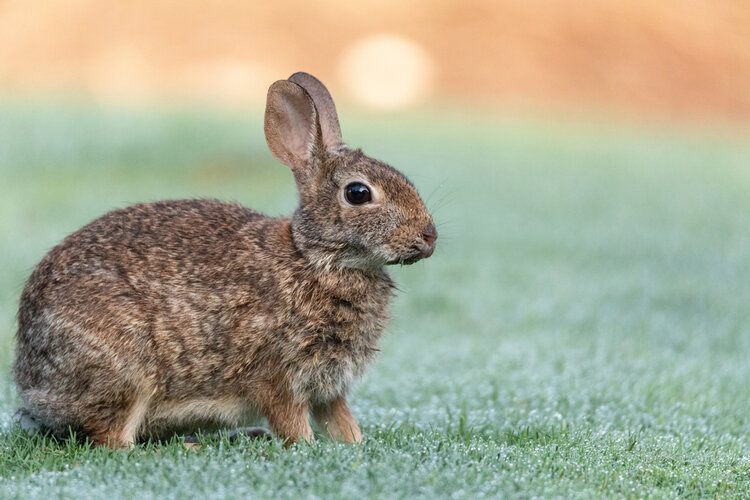
| Size: | Small/Standard |
| Weight: | 3–5 pounds |
| Lifespan: | Up to 4 years |
| Body Type: | Cylindrical |
| Temperament: | Wild, alert, secretive |
| Suitable for: | Leaving in their swampy homes, appreciating from a distance |
While most rabbits run at the mere mention of a swim, the Marsh Rabbit is a very different breed indeed! Native to wet habitats in the Carolinas, they spend their entire lives in, near, and around water. Markedly different even from other wild rabbit breeds, these “swamp rabbits” hold a peculiar place in Appalachian culture.
Yes, Sylvilagus palustris (their scientific name) is quite a unique breed of rabbit. In today’s article, we’ll be exploring a little bit about their history and origin before taking a closer look at where and how they live. So, if you’re curious about this one of a kind, regionally specific rabbit breed, read on to find out more!

History and Origin of the Marsh Rabbit Breed
Almost every breed of domesticated rabbit we know today has a Wild European rabbit as its ancestor. However, wild rabbits in North America are all descended from a Cottontail as their common ancestor—and the Marsh Rabbit is no exception.
Native to the Southeast corner of the United States, the Marsh Rabbit is one of the rarer subspecies of wild rabbits that can be seen in North America. When European settlers first arrived in North Carolina, they were surprised to find a rabbit with very different behaviors than the ones they knew back home. These Marsh rabbits chose to go out only at night, and were often seen swimming and bathing contentedly.
Prized for both their meat and fur by these early settlers, the Marsh Rabbit has continued to enjoy a fair run of the wet lowland habitats that form their part of the United States. While their secretive natures make it very difficult to place an estimate on their population numbers, it’s generally agreed by wildlife conservation groups that they are thriving abundantly in the wetlands.
General Description
Strongly resembling something of a cross between a large mouse and a small rabbit, the Marsh Rabbit is easily identifiable by its long, cylindrical body and short, rounded ears. They’re not fond of being out during the daytime, and spend most of their lives in secretive isolation deep within their dense, swampy habitats.
For wild rabbits, they are medium-sized. In comparison to domestic rabbits, you’ll notice their smaller feet and teeth, as well. Their coarse, dark brown fur is often tinged with a bluish-gray color on the underside of their tails, leading to their nickname “bluetails” throughout North Carolina.
Habitats and Habits
Because of their semiaquatic natures, Marsh Rabbits need to live near a permanent water source. Favoring dense habitats near lakes, streams, wetlands, and the like, they’re never at a want for their main foodstuffs: weeds, grasses, roots, and the stems and bulbs of plants. During the winter, they’ll also eat bark and twigs from nearby trees.
Unlike the crepuscular body clocks of domestic rabbits, Marsh Rabbits are entirely nocturnal. You’re only likely to see them during the day if a human or animal has disturbed their daytime hiding places.
Breeding and Young
Most Marsh Rabbits rapidly following the winter, but are known to continue breeding year-round in the warmer climates of the Southeast. With 3 or 4 litters of babies possible in a year, they multiply quickly and abundantly. Like cottontail rabbits, these babies will be entirely helpless for up to 6 weeks, requiring constant care and attention from their Marsh Rabbit mothers.

Final Thoughts
The Marsh Rabbit is a truly unique wild rabbit breed. If you ever have the good fortune to see them in their natural habitats in the American Southeast, you’ll no doubt be delighted at their frolicking and swimming. As with all wild animals, it’s best to leave them in the wild—no matter how much you’d like to keep one as a pet.
We hope this article has satisfied your curiosity about this one-of-a-kind rabbit breed! A special thanks goes out to the North Carolina wildlife department for their informative guidelines, which we used as a source for today’s guide.
Featured Image: SunflowerMomma, Shutterstock









